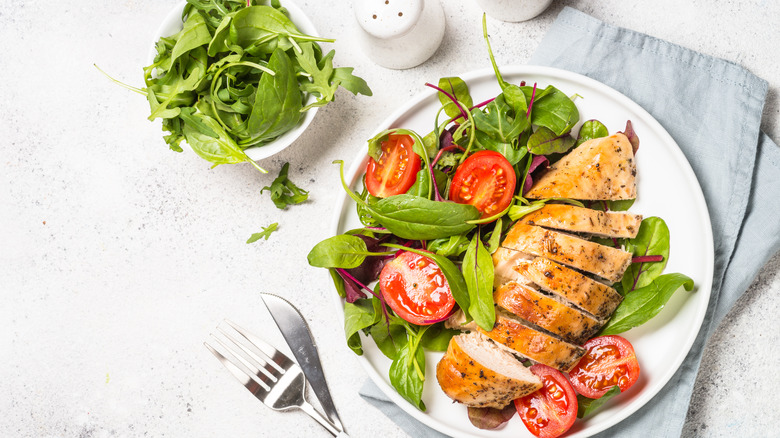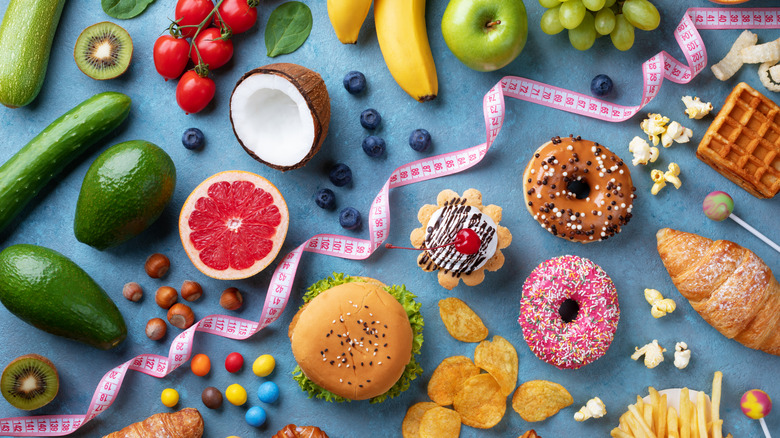Read This Before Trying The CICO Diet
It seems like there's a new diet fad every other week, with some of these methods telling you to drink heinous concoctions, avoid carbs, eat like a caveman, and basically anything else you can think of. One diet from the '70s had people eating cookies all the time, while another from the Victorian Era promoted some pretty strange and dangerous ideas about chewing your food.
One diet that seems to be rising in popularity is the CICO diet, or Calories In, Calories Out. The premise of this diet, according to Men's Health, is to consume fewer calories than you burn. To do this successfully, people are encouraged to figure out roughly how many calories they expend in a day, whether that's from a doctor, an online calculator, or via another method, and then count the amount of calories that they eat in a day. The general idea is that if you consume fewer calories than you burn, you'll lose weight.
Not all calories are created equally
The concept itself is really simple, and "the idea of calories in and calories out is absolutely the backbone of weight loss," Bethany Doerfler, MS, RDN, told Men's Health. The issue, however, is that "metabolism and weight loss are so much more complex than that." Calories aren't created equally, and some foods are more filling and nutritious than others. For example, 100 calories' worth of a baked potato will likely make you feel more satiated than a 100-calorie doughnut.
A study on cell metabolism in the National Library of Medicine compared participants who ate a diet of whole foods with those who ate processed ones — and it found that those eating more processed foods tended to eat more, eat faster, and gain more weight than those who ate whole foods. So, while focusing on how many calories you're eating in a day can be helpful, there are other factors to consider for successful weight loss, like where the calorie comes from, how filling it will be, and how your body will process it.

